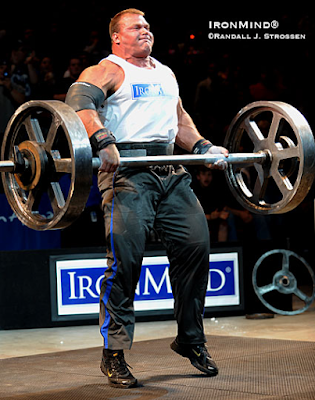Before I even write this, I feel like I’m re-writing “Moderation through extremes”, but my regular readers know that I tend to lock onto a theme for a while, obsess on it, then move on to the next thing. Which is actually a fair bit of “case in point” here, so that’s a victory. But, already, I have digressed before I’ve even started.
I always wanted to be big and strong, this is true, but ALONG with that I was obsessed with martial arts growing up. It was the late 80s/early 90s, and Karate and Ninjas were everywhere, from Karate Kids to Teenage Mutant Ninja Turtle to Bloodsport to Surf Ninjas to just everything: it was an era of total cheese that we all loved and bought into fully. I BEGGED my parents to enroll me in some martial arts training because I wanted to be like Ernie Reyes Jr in the second TMNT movie, and after a summer of YMCA “krotty” to see if I was actually bought in, I was enrolled in a local Tae Kwon Do school from ages 8-17. Those of you familiar with Tae Kwon Do will be unsurprised to hear that I did not really become much of a fighter with that pedigree (though it did at least ignite the spark that eventually got me into wrestling, boxing, Muay Thai, submission grappling/BJJ, and now I’ve come full circle to Tang Soo Do), but it DID give me my first exposure to eastern philosophy, and specifically Taoism. And though I tend to focus far more on the west when I talk philosophy, Taoism is pretty awesome.
 |
| You thought I was joking. And yes, that IS Rob Schneider at the top...and Leslie Nielsen at the bottom. This movie is wild! |
If you’ve never looked at the South Korean flag (spoilers: Tae Kwon Do is a Korean martial art), right in the center is what most folks know as the “yin/yang” (it’s “um” and “yang” for Korean, unimportant but interesting), which, to summarize so much that it’s to the point of wrongness, represent equal but opposite forces in the universe existing in harmony. Yin is feminine, yang is muscular, yin is soft, yang is hard, etc. This is the basic premise of duality: the harmonious existence of two opposing forces creating balance. Too much of one disrupts harmony and creates imbalance. It’s a contrast to western thinking: we tend to have virtues and vices, and you want to maximize the virtue and minimize the vice. Imagine trying to tell people “You should be equal parts good and evil: that’s balanced!” It wouldn’t fly.
But, in turn, this western thinking can hamstring a trainee that seeks to pursue physical transformation, because it tends to result in a SINGULAR approach. So many trainees are in pursuit for that ONE way to achieve their goals. What’s the ONE program I can use? What’s the ONE diet I can follow? What’s the BEST rep range? How many sets are optimal? Etc etc. We see these questions all the time, and the most frustrating answer to give is the correct one: “it depends”. And this, of course, speaks to duality: there will be times when the answer is one thing, and times when it is another.
 |
| Just do it all at once: duh! RIP to a Legend. |
And that’s because, a few thousand years ago, we had periodization figured out! But we are, of course, doomed to repeat history (The Eternal recurrence ala Nietzsche? Or perhaps “The Myth of Sisyphus?” Hah! Got some western philosophy in there), so here we go re-learning this lesson. We can’t try to maximize virtue and minimize vice here: we need balance. And balance doesn’t necessarily mean balance at ALL times: it can mean balance THROUGH time.
You wanna run your linear progression program? Alright, cool: you are hardcore into the yang. You’re running it and you’re running it and you are just full on maximizing your yang. Eventually, it stops working. Why? You are imbalanced! You need some yin in your life! You were running sets of 5 this whole time, 3 days a week, full body, few lifts? Time to run high reps, split workout, 4-5 days a week of lifting, with a large variety of lifts. Or maybe even another “opposite” direction of single set work (Hello DoggCrapp/Super Squats). And we run that until we are imbalanced, and then we seek balance again.
 |
| BALANCE! |
Am I going to dare talk about duality of nutrition? Mr Lowcarb/Deep Water/Mountain Dogg/Organic Pasture Raised Grassfed Piedmontese etc etc? Hell yeah I am, because anyone who has followed the blog long enough KNOWS I was a total fast food fiend before all that. And even without the fast food, I did the gallon of milk a day for Super Squats, and lots of fantastic carbs. And when I ran DoggCrapp in 2011, I was doing carb cycling. And right before I jumped onto this recent kick of health focused, I was purely strength focused. I was chasing a 275lb keg press and was eating ANYTHING that would get me to that goal. I had whole frozen pizzas as my pre-pre training meal. I got my bodyweight up to a second all time high of 210lbs. And then, so full of yang, I shifted to yin. And I dropped to 177lbs and the leanest I had ever been in my life (which is the current avatar photo for this blog). And now, these days, I strive to find balance: trying to be strong AND lean AND healthy. I attempt to EXIST in duality.
And that’s all this process is: finding that balance. And in order to do so, some time will need to be spent SHIFTING the balance as a means of course correction. If we always do the same thing, we end up too much of one and not enough of the other. We need different, we need new, we need unique, because we need balance. And there’s no reason to fear this balance: it’s the necessary order of things. Attempting to be all of one thing is unnatural: it’s unharmonious. The “complete” being will have the qualities of both put together. The incomplete being will never realize its potential. Allow this duality to exist within you and manifest it by varying and adapting your training and nutrition as necessary.
 |
| Two opposing forces existing harmoniously can be PRETTY powerful |
But keep doing your conditioning.














